The History of Fintech
The history of fintech innovation goes as far back as the 1860s. By learning about fintech’s origin and evolution, it’s easier to understand where these exciting and disruptive technologies are currently headed.
- The fintech revolution begins
- Financial innovations
- The emergence of modern fintech trends
- Significant fintech advancements
- A new era of fintech trends
- Fintech introduces the world to online banking and trading
- Fintech innovations in the new millennium
- Prepare yourself for the financial possibilities of fintech
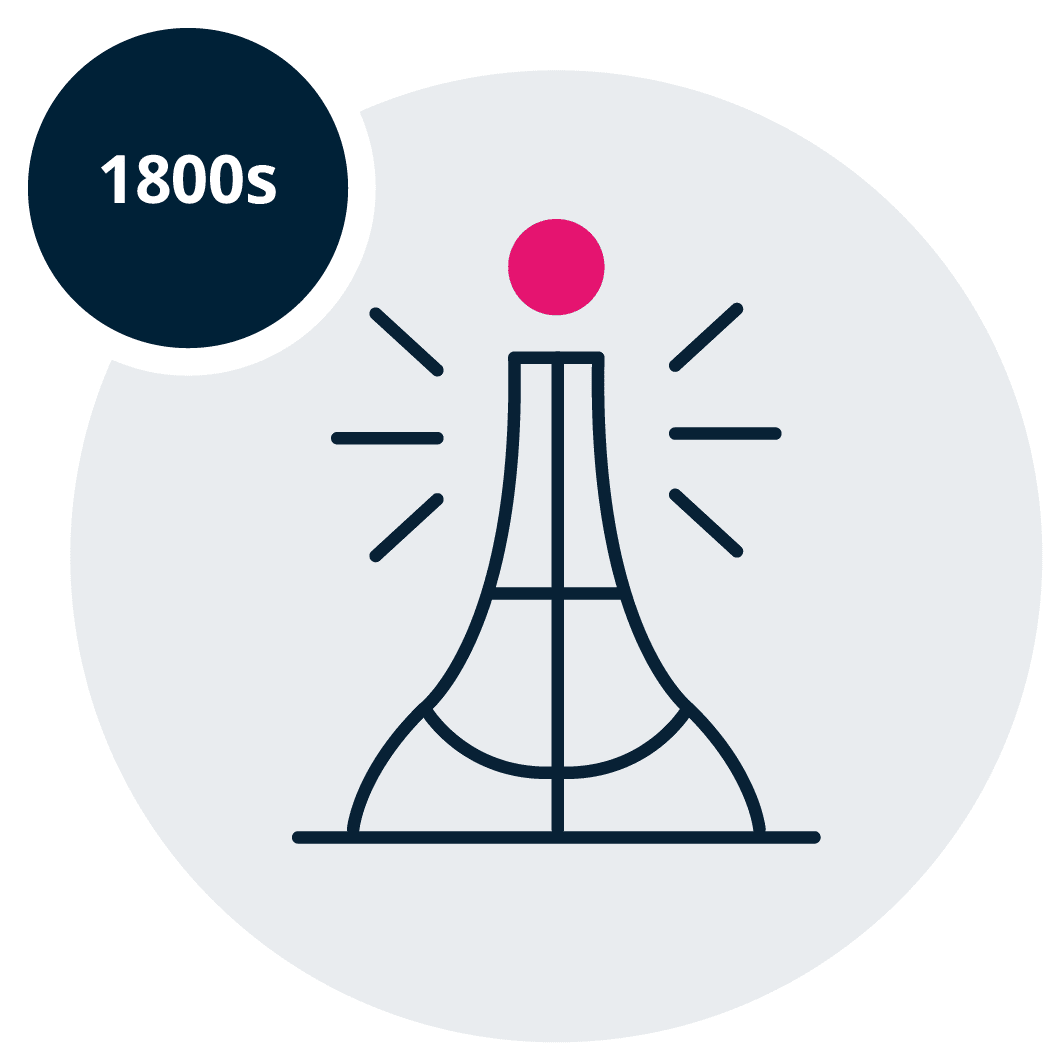
The fintech revolution begins
The origins of fintech can be traced back to the 1800s:
1860s
Giovanni Caselli developed the pantelegraph in the 1860s – a period now considered the beginning of the history of financial innovation.1
The pantelegraph was mostly used to verify signatures in banking transactions by sending and receiving transmissions on telegraph cables. This verification process was slow and cumbersome – it took about 108 seconds for a sheet of paper with around 25 written words to transmit.2
1880
By the 1880s in the U.S., consumers and merchants began exchanging goods and services for credit using charge coins and plates.3
Charge coins were metallic tokens that displayed the customer’s identification number and an image associated with the vendor, and were roughly the same size and shape as modern coins. Charge plates were either aluminum or white metal plates embossed with a customer’s name and address on the front and a paperboard insert on the back with the issuer’s name and cardholder’s signature.
Charge coins were mostly forgotten by 1960, followed by charge plates, which were replaced with modern credit cards.
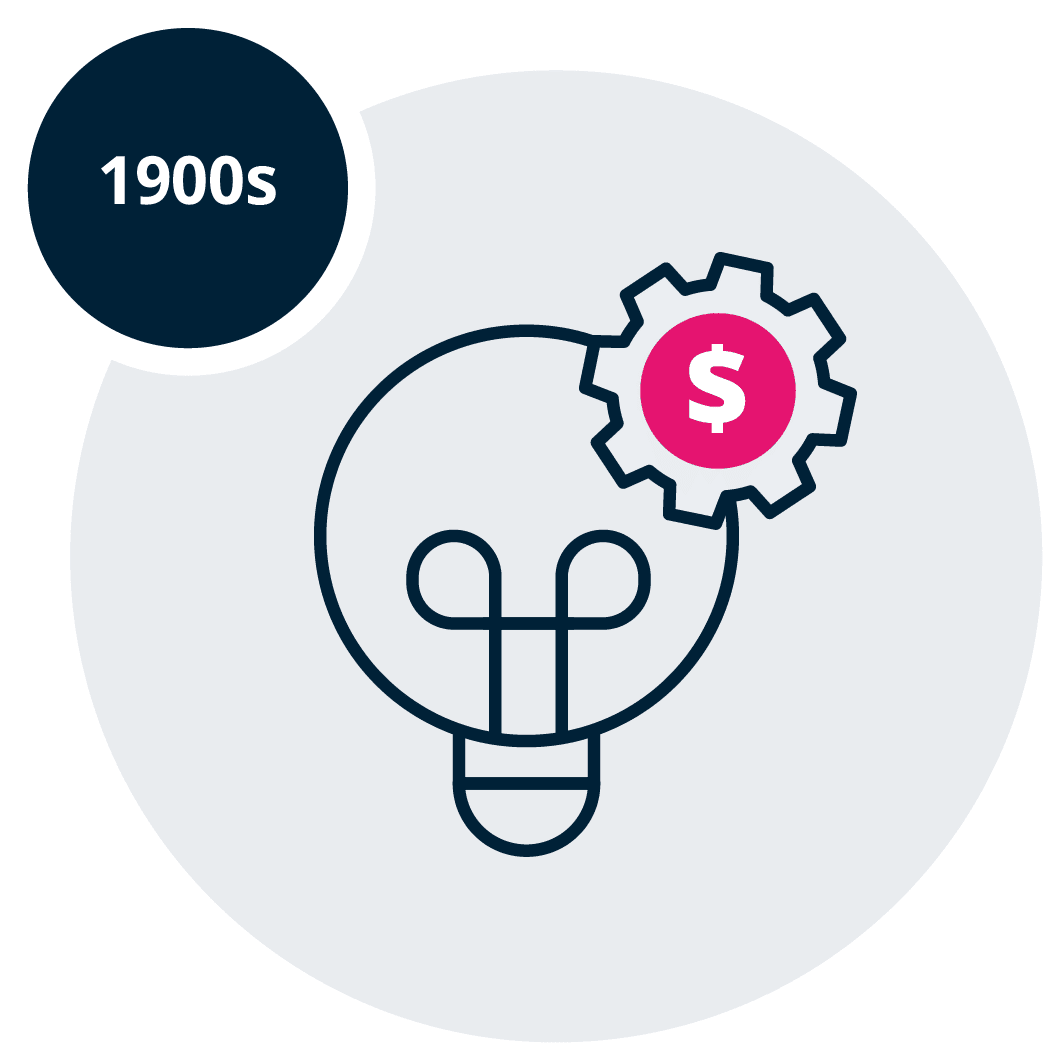
Financial innovations
The 1900s saw more rapid financial innovations than the previous century:
1918-1970
The next early fintech innovation was when the United States Federal Reserve Banks devised a system to move funds electronically. This system was first known as the Federal Reserve Wire Network and is now known as Fedwire.4
Connecting all 12 Reserve Banks across the country, the Morse code-based system was used as a real-time gross settlement funds transfer system until the 1970s. During this decade, the process shifted from telegraphy toward telex, and finally to computer operations and proprietary communication networks. Telex was an international network of teleprinters that transferred messages securely from one teleprinter to another.5
1919
In what’s arguably the first allusion to fintech and the future of financial services, economist John Maynard Keynes wrote about the link between finance and technology in his book, The Economic Consequences of the Peace.6
The emergence of modern fintech trends
The 1950s saw the emergence of credit cards:
1950
Diner’s Club Inc. invented the first iteration of the modern credit card. Purchasing on credit was a laborious and segmented process before this universal credit card was introduced. Those who were lucky enough to get hold of a Diner’s Club card could dine on credit at a variety of establishments.7 Originally, the Diner’s Club had 200 members; within two years, it grew to 42,000 across the U.S. The concept quickly caught on.8
1958
Shortly after the Diner’s Club card exploded in popularity, the American Express Company credit card was introduced. This innovation helped American Express to evolve into the largest global payments network.9
Significant fintech advancements
Technology advanced quickly in the 1960s, impacting the financial sector in several revolutionary ways:
1960
Quotron, a Los Angeles-based company, was the first to offer stockbrokers and money managers stock market quotes on an electronic screen instead of on printed ticker tape. By 1986, Quotron was renting 100,000 terminals to the brokerage industry, equal to roughly 60 percent of the 1986 market. This attracted the attention of Citicorp, which acquired Quotron shortly after.10
The speed and agility accompanying digital recall meant brokers could receive up-to-the-minute prices for securities such as stocks, bonds, and other types of traded investments.
1966
The telex network replaced the telegraph as the standard for long-distance, instantaneous communication of information.11
Any user on a telex exchange could deliver messages to any other user around the world. This flexibility opened the doors for the global communication of financial transactions and information.
Though telex is still in use today, it’s taken a backseat to email.12
1967
North London’s Enfield Town branch of Barclays Bank was the first to have an automated teller machine (ATM) installed. Customers had to insert paper checks issued by a teller or a cashier to facilitate the convenience of receiving money from a machine. These checks were marked with carbon-14 as a security measure to improve machine readability and, for additional protection, a six-digit pin was added. This set a trend for the future of financial services being faster and more convenient.13
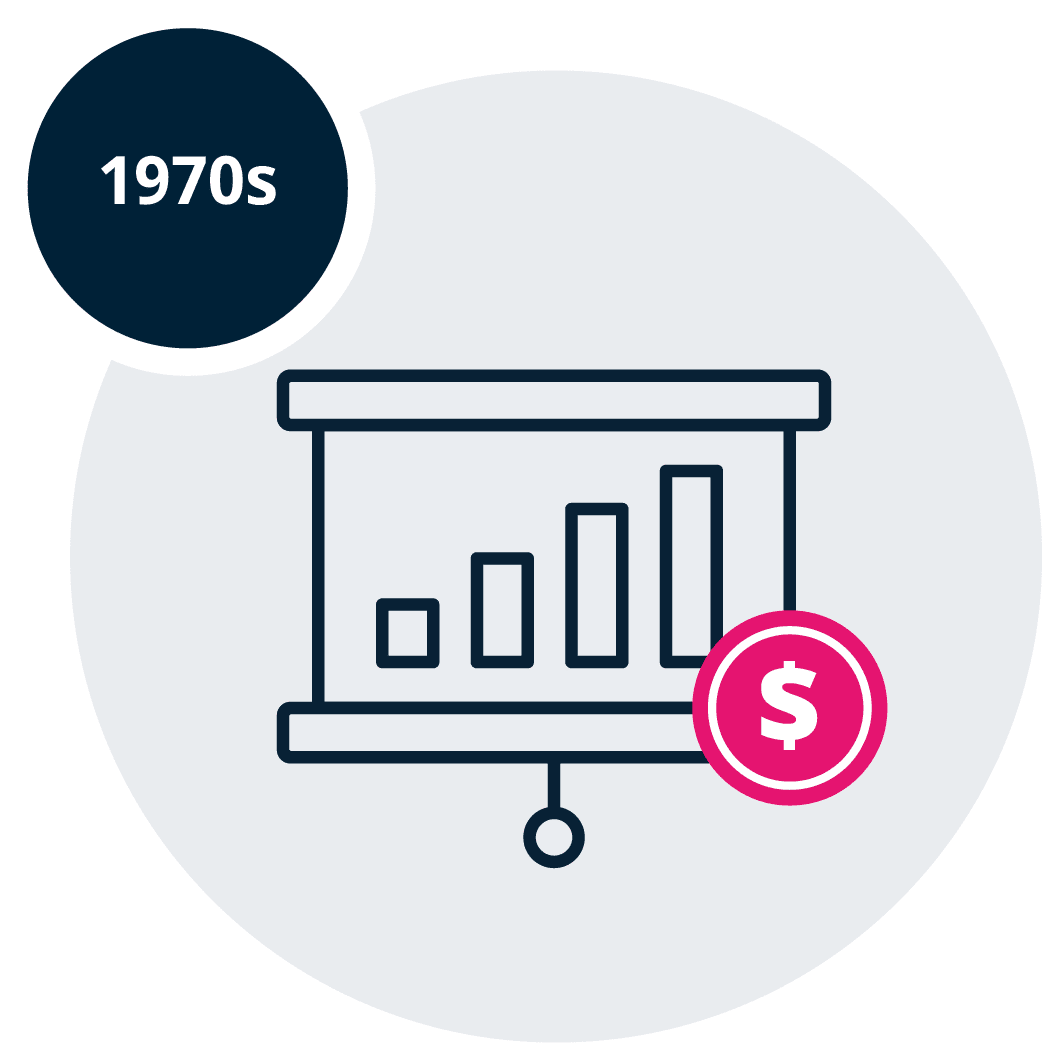
A new era of fintech trends
Fintech quickly transforms as technology advances.
1971
The establishment of the U.S. National Association of Securities Dealers Automated Quotations, otherwise known as the NASDAQ, further transformed the fintech industry in 1971. As the world’s first electronic stock market, NASDAQ helped reduce the bid-ask spread (the difference between the bidding price and asking price of a stock) and heralded the end of fixed securities commissions. NASDAQ helped modernize the initial public offering (IPO).14 IPO’s are when a company that is privately owned allows the general public to purchase its shares on a stock exchange.15
Fintech introduces the world to online banking and trading
Today, we jump on our phones, open an app, and log in to our online banking accounts. Just a few decades ago, the transaction process wasn’t this easy, but things were changing rapidly.
Two great fintech leaps were taken in the 1980s, affecting the wealth management sector. These were electronic trading (e-trading) and online banking.
1982-1983
E-Trade Financial Corporation, originally founded under the name of TradePlus, became the first online brokerage firm in 1982. Today, E-Trade still serves self-directed investors as a public company16 and was purchased by Morgan Stanley in 2020.17
In 1983, customers of the Nottingham Building Society were the first to access online banking provided by the Bank of Scotland18 – another major step in the evolution of fintech. Online banking was then introduced in the U.S. by Chemical Bank – also in 1983.19 However, due to a lack of customer draw in the U.S., the idea was canned in 1989.20 Other banks had a similar experience and it wasn’t until much later that online banking was widely adopted.
Because of the success of internet banking in the U.K., the majority of U.S. banks set up their first transactional websites for internet banking in the late 1990s.
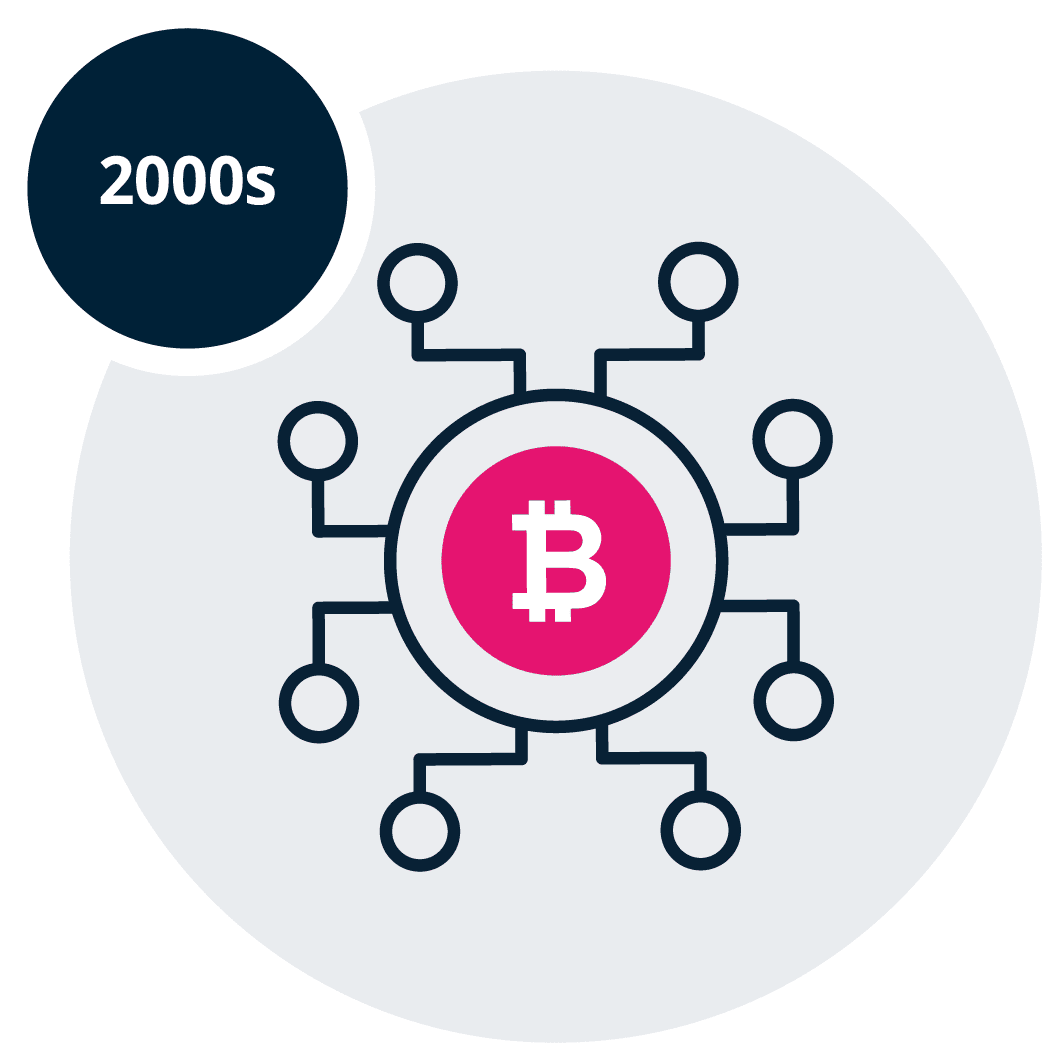
Fintech innovations in the new millennium
The turn of the century introduced even more exciting financial technologies:
2009
Bitcoin was released in 2009.21 Bitcoin is considered by investors to be the first type of cryptocurrency, opening the door to an entirely different type of currency trading.22
2011
Formerly known as Google Wallet, Google Pay Send was developed and released in 2011. It allowed smartphone users with Near-Field Communication (NFC) chips in their devices to make payments through their phones by tapping against a reader at the cash register, rather than using credit cards or cash.23 Now, Google Pay allows you to pay others, or businesses, and put your credit cards and accounts on your phone, in one easy-to-use app.24
2017
In this year, Alibaba introduced “smile to pay” facial recognition payments at KFCs in China, a service that allowed users to pay for their food by simply smiling at a 3D camera.25
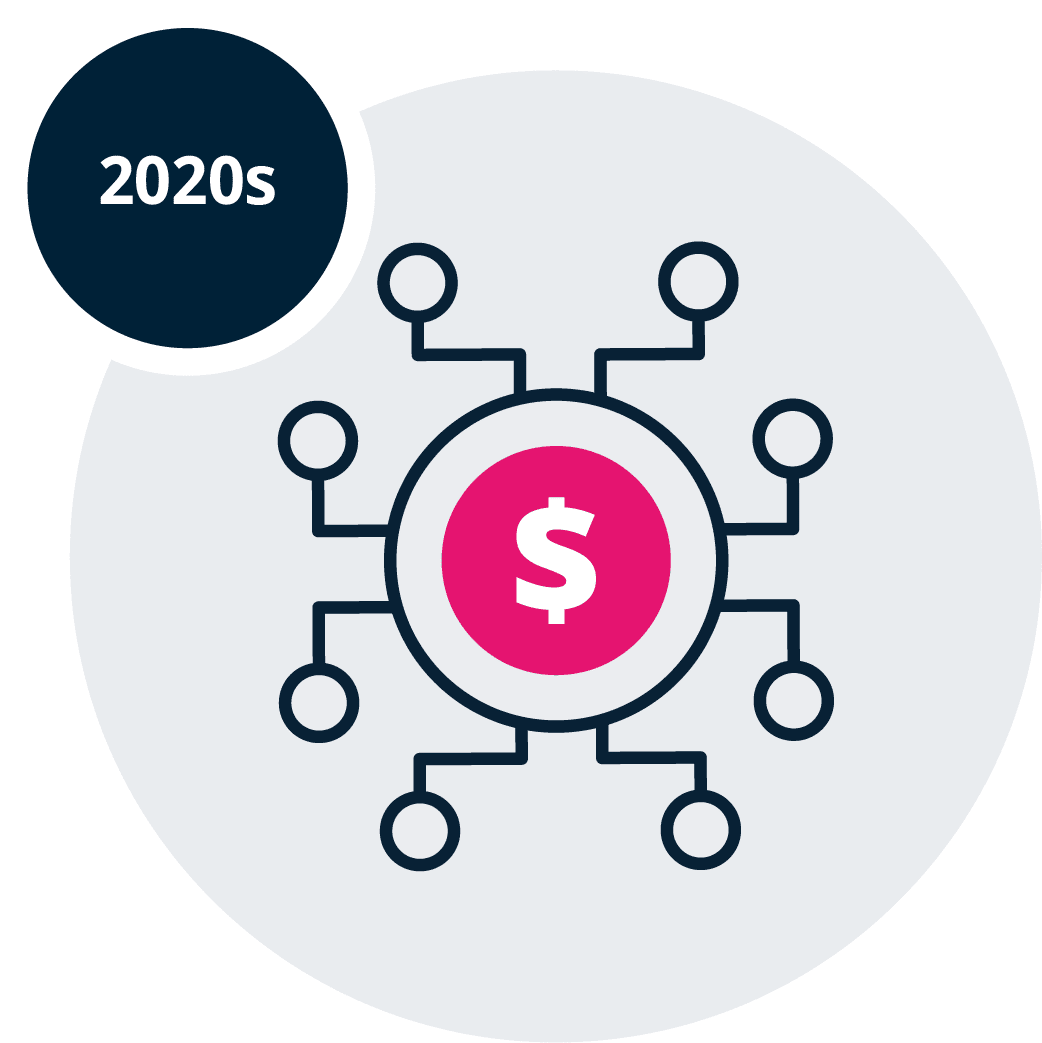
Prepare yourself for the financial possibilities of fintech
The fintech industry has grown in leaps and bounds in recent years and the future holds great promise. One way to stay on the cutting edge of the latest technologies in 2022 and beyond is to learn more about fintech trends and evolutions, such as the future of money, marketplaces, and infrastructure.
Beyond 2020
Looking back to 2018, when just $1.5 billion was invested in blockchain, worldwide investment is expected to be 10 times that amount in 2023, growing to $15.9 billion.26 The adoption of fintech is a testament not only to the willingness of the financial industry to adapt and evolve but also to the speed at which it’s prepared to do so.
Find out how to step beyond current fintech disruptions and build a career in this exciting field with a six-week FinTech online short course. Guided by faculty from Harvard’s Office of the Vice Provost for Advances in Learning (VPAL), in association with HarvardX, you’ll learn how to successfully tackle transformative initiatives within the financial technology sector. Gain a solid understanding of fintech’s innovation possibilities as you explore highly relevant case studies, and begin to propel your career in finance forward.
Expand your knowledge with an online fintech course
- 1 (Aug, 2021). What is a pantelegraph (invented by Giovanni Caselli)?’. Retrieved from Fax Authority.
- 2 (Aug, 2021). What is a pantelegraph (invented by Giovanni Caselli)?’. Retrieved from Fax Authority.
- 3 Koeppel, D. (Jul, 2019). ‘The first American credit card was a coin’. Retrieved from NYTimes.
- 4 (May, 2021). “Fedwire funds services’. Retrieved from the U.S. Federal Reserve.
- 5 (Nd). ‘telex’. Retrieved from Britannica. Accessed December 22, 2021.
- 6 Kirshner, J. (Dec, 2019). ‘The man who predicted Nazi Germany’. Retrieved from NYTimes.
- 7 (Nd). ‘Diners Club history’. Retrieved from Diners Club. Accessed December 17, 2021.
- 8 Hoffman, M. (Aug, 2021). ‘The history of credit cards’. Retrieved from Bankrate.
- 9 (Nd). ‘Our history’. Retrieved from American Express. Accessed December 17, 2021.
- 10 Hansell, S. (Jan, 1994). ‘Citicorp passes off Quotron, predicts big quarterly profit’. Retrieved from NYTimes.
- 11 (Jun, 2018). ‘Telegraph’. Retrieved from Encyclopedia.com.
- 12 (Nd). ‘telex’. Retrieved from Britannica. Accessed December 17, 2021.
- 13 (Jun, 2017). ‘From the archives: the ATM is 50’. Retrieved from Barclays.
- 14 Judge, B. (Feb, 2021). ‘8 February 1971: Nasdaq begins trading’. Retrieved from MoneyWeek.
- 15 Ashford, K. & Schmidt, J. (Aug, 2021). ‘What is an IPO?’. Retrieved from Forbes.
- 16 Anderson, K. (Apr, 1999). ‘Business: the company file E*Trade challenges offline brokerages’. Retrieved from BBC News.
- 17 Iacurci, G. (Feb, 2020). ‘Morgan Stanley, with E-Trade deal, makes ‘land rush’ for mom-and-pop investors’. Retrieved from CNBC.
- 18 Daychopan, D. (Jan, 2016). ‘From barter to bitcoin’. Retrieved from TechCrunch.
- 19 Bennett, R. (Dec, 1983). ‘Banking goes into the home’. Retrieved from NYTimes.
- 20 Sloane, L. (Jan, 1989). ‘Consumer’s world; Home banking by computer hasn’t made paper obsolete’. Retrieved from NYTimes.
- 21 (Nd). ‘Bitcoin v0.1 released’. Retrieved from Satoshi Nakamoto Institute. Accessed December 17, 2021.
- 22 Reiff, N. (Aug, 2021). ‘Were there cryptocurrencies before bitcoin?’. Retrieved from Investopedia.
- 23 Garside, J. (Sep, 2011). ‘Google Wallet mobile payments system launched to public’. Retrieved from The Guardian.
- 24 (Nd). ‘Say hello to a better relationship with money’. Retrieved from Google Pay. Accessed January 4, 2022.
- 25 Russell, J. (Sep, 2017). ‘Alibaba debuts ‘smile to pay’ facial recognition payments at KFC in China’. Retrieved from TechCrunch.
- 26 Ni, X. (Mar, 2021). ‘What to expect from the fintech industry in 2021’. Retrieved from Fortune.
